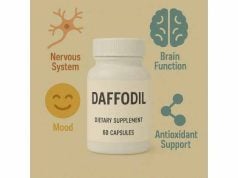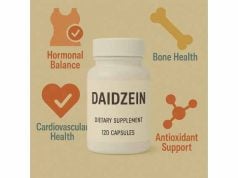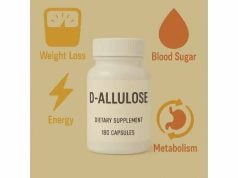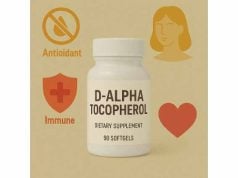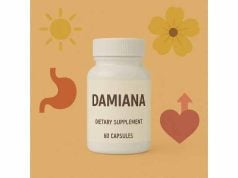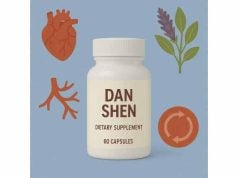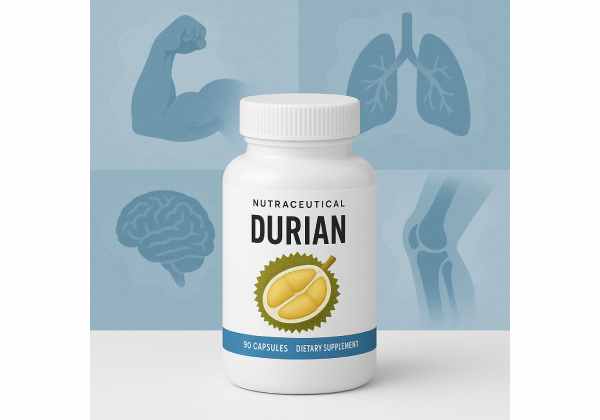
Durian is one of Southeast Asia’s most distinctive fruits—spiky on the outside, custard-like within, and powerfully aromatic. Beyond its reputation, durian is a calorie-dense whole food rich in potassium, vitamin C, fiber, and unique sulfur-containing compounds. Early research links durian’s polyphenols and sulfur metabolites to antioxidant and anti-inflammatory effects, while small human studies suggest its glycemic index is relatively low for a sweet fruit. This guide translates the science into everyday guidance: what durian contains, how it may help, realistic serving sizes, and who should limit or avoid it. You will also find practical buying and storage tips, balanced safety notes (including the frequent “durian and alcohol” question), and a concise evidence summary so you can decide where durian might fit in your diet.
Quick Durian Highlights
- One cup (about 243 g) provides ~357 kcal, ~9 g fiber, and ~1,050 mg potassium; 100 g has ~147 kcal.
- Low glycemic index around 49 with a moderate glycemic load when portioned (about 13 per 100 g).
- Practical intake for most healthy adults: 100–200 g per day, 2–4 times per week.
- Safety watch: combine cautiously with alcohol due to possible aldehyde dehydrogenase inhibition.
- Avoid or limit if you have chronic kidney disease, need potassium restriction, or struggle with portion-controlled energy intake.
Table of Contents
- What is durian and its nutrients
- What benefits does durian offer
- How to use durian in your diet
- How much durian per day
- Side effects and who should avoid
- What the evidence says overall
What is durian and its nutrients
Durian (Durio spp., most commonly Durio zibethinus) is native to Borneo and cultivated across tropical Asia. It is often called the “king of fruits” for its intense aroma and complex flavor—ranging from caramel and almond notes to savory, onion-like tones. Botanically, durian belongs to the mallow family (Malvaceae). The edible portion is the aril: a soft, custard-like flesh surrounding large seeds.
From a nutrition standpoint, durian is unusual among fruits because it contains meaningful amounts of both carbohydrates and fats together with fiber and potassium. Typical composition per 100 g edible aril is about 147 kcal with ~27 g carbohydrate, ~5 g fat, ~1.5 g protein, and ~3–4 g dietary fiber. Vitamin C commonly falls around 20 mg per 100 g, and potassium is high—often in the several hundreds of milligrams per 100 g—making durian comparable to or higher than bananas by weight. In cup measures, one cup of diced aril (~243 g) provides roughly 357 kcal, ~66 g carbohydrate, ~13 g fat, ~3.6 g protein, ~9 g fiber, ~48 mg vitamin C, and ~1,050 mg potassium. These values vary by cultivar and ripeness.
Durian’s phytochemical profile helps explain many of its studied effects. It contains:
- Polyphenols and flavonoids (e.g., kaempferol, quercetin, phenolic acids) associated with antioxidant activity.
- Sulfur-containing volatiles (e.g., ethanethiol, diethyl disulfide, trisulfides), which drive the characteristic aroma and may interact with enzymes involved in alcohol metabolism.
- Glutathione (GSH) and its precursor γ-glutamylcysteine (γ-EC) in relatively high amounts for a fruit, with levels influenced by maturity and variety.
Finally, durian’s glycemic index (GI) is lower than many expect for a sweet fruit—about 49 in a small randomized human trial—likely due to its fiber and fat slowing gastric emptying. We will cover practical implications for blood sugar and energy balance in later sections.
Key takeaways of this section
- Durian is calorie-dense and nutrient-dense. Expect ~147 kcal per 100 g and ~357 kcal per cup.
- It is rich in potassium and vitamin C, and it provides fiber.
- Unique sulfur compounds and GSH-related metabolites differentiate durian from most fruits.
What benefits does durian offer
Antioxidant and anti-inflammatory support. In vitro and food-composition research attributes durian’s antioxidant capacity to polyphenols and other phytochemicals present in pulp, peel, and seeds. Extracts show free-radical scavenging and nitric-oxide–modulating activity in cell models. While laboratory results do not guarantee clinical outcomes, they provide plausible mechanisms consistent with dietary patterns that emphasize polyphenol-rich plant foods.
Glutathione pathway support. An emerging line of research focuses on durian’s γ-glutamylcysteine (γ-EC) and glutathione content. In human cell models exposed to oxidative stress, durian pulp extract standardized to γ-EC increased intracellular glutathione and reduced pro-inflammatory mediators. Because glutathione recycling is a central antioxidant defense, foods providing precursors like γ-EC may help cells maintain redox balance. This is promising but preliminary: the best evidence so far is in vitro, not in people.
Glycemic profile and satiety. The glycemic index of durian (about 49, low GI) suggests a gentler post-meal glucose rise than many fruits. That said, glycemic load matters: a larger portion can still contribute substantial carbohydrate. Practically, moderate servings (e.g., 100 g) tend to produce a modest GL (~13), which pairs well with protein or yogurt to further smooth the glucose curve. Durian’s fiber (about 3–4 g per 100 g; ~9 g per cup) also supports digestive regularity and may promote fullness.
Cardiometabolic context. Animal studies have reported reductions in blood lipids when durian was added to high-cholesterol diets, and lactic-fermented durian products (such as tempoyak) harbor probiotic candidates in laboratory assays. These are hypothesis-generating findings rather than clinical advice. In the real world, durian’s monounsaturated-leaning fat profile and potassium content fit a cardiometabolic diet—if total calories are controlled and portions are moderate.
Micronutrient diversity. Varieties differ in minerals and bioactives. Wild durio species can deliver substantial percentages of daily magnesium, phosphorus, and carotenoids per 100 g—especially orange or red-fleshed types—though cultivated D. zibethinus varies less in retail markets. For consumers, the practical message is to treat durian as a nutrient-rich fruit where color and variety may signal differing phytochemicals.
Bottom line on benefits
- Antioxidant and anti-inflammatory mechanisms are supported by lab data; clinical trials are limited.
- Low GI with a moderate GL at reasonable portions makes durian compatible with blood-sugar-aware eating.
- High potassium supports healthy blood pressure in many adults, but those with kidney disease require caution (see Safety).
How to use durian in your diet
Choose and store. Select fruits with a slight give at the seams and a strong but not acrid aroma; the stem should look fresh, not desiccated. If buying pre-packed arils, check for a creamy texture without watery separation. Refrigerate opened arils and consume within 1–2 days. Frozen arils are a convenient alternative and retain most nutrition.
Prep ideas that balance flavor and energy.
- Simple bowl: 100–150 g durian aril with plain yogurt or skyr. The protein tempers glycemic load and enhances satiety.
- Smoothie base: 80–120 g durian with ice, spinach, lime, and a small scoop of whey or soy isolate. Keep added sugars low.
- Overnight oats: 60–90 g diced durian folded into oats, chia, and milk. Portion control is easier in a measured jar.
- Dessert nibble: 50–80 g straight, paired with tea or coffee—an indulgent but mindful finish to a meal.
Culinary tips.
- Balance richness with acid (lime, passionfruit) or bitterness (cacao nibs) to keep servings satisfying at smaller sizes.
- Use spice (ginger, cardamom) to complement savory notes without extra sugar.
- In baking, durian’s moisture and fat can replace some butter or cream in custards and cheesecakes; adjust sweetness downward.
Pairings for blood sugar and satiety.
- Combine durian with protein (eggs, yogurt, tofu) or viscous fiber (chia, oats) for steadier glucose responses.
- If using as pre-workout fuel, keep to ~60–100 g and include hydration; if post-workout, pair with 20–30 g protein.
Cultural uses and fermentation. In Malaysia and Indonesia, fermented durian (tempoyak) is used as a savory condiment. Fermentation changes flavor and may introduce lactic acid bacteria; however, probiotic function depends on strain and preparation. Treat tempoyak as a traditional food rather than a guaranteed probiotic supplement.
Practical pitfalls to avoid.
- Oversized portions turn a nutrient-dense fruit into a calorie surplus quickly.
- Heavy added sugars (sweetened smoothies, syrups) miss the point; durian is naturally sweet.
- Heating intensifies aroma—great for enthusiasts, not for shared spaces.
How much durian per day
Durian is a food, not a drug, so there is no medically defined “dose.” The right amount depends on your calorie budget, health goals, and lab values (especially potassium). The guide below uses common serving sizes and the best available glycemic and nutrient data.
Everyday, healthy adults
- Standard serving: 100–150 g (about 3–5 oz) at a time. Expect ~147–220 kcal, ~27–41 g carbohydrate, ~5–8 g fat, and ~3–6 g fiber.
- Daily ceiling for most: 100–200 g on days you include it. That is roughly 1–2 small palmfuls of aril.
- Weekly frequency: 2–4 times per week fits well in a balanced diet.
Blood-sugar management
- Durian’s GI is ~49 (low). At 100 g, estimated glycemic load ~13 (moderate).
- If you monitor glucose, start with 50–100 g paired with protein and observe your personal response.
Weight management
- Because it is energy-dense, treat durian as a dessert or snack substitute, not an add-on. A 100 g serving can replace a pastry or ice-cream portion while offering fiber and micronutrients.
- To manage appetite, eat slowly and cold; cooler temperature and mindful pacing help satiety.
Athletes and active people
- For long runs or rides, 60–100 g durian plus electrolytes can serve as a real-food option; pair with water and a salt source if sweating heavily.
- After training, 100–150 g with 20–30 g protein supports recovery without excessive sugar.
Special situations
- High blood pressure (without kidney disease): One 100 g serving is compatible with potassium-rich, DASH-style eating.
- Pregnancy: Durian provides folate and vitamin C, but check with your clinician if you have gestational diabetes or elevated potassium.
Why not more than 200 g at once?
- Larger portions push calories and potassium up quickly and will raise glycemic load. Many people also find the intense flavor more enjoyable in moderated amounts.
Side effects and who should avoid
1) Potassium load and kidney disease. Durian is potassium-rich. People with chronic kidney disease (CKD), those on RAAS-blocking medications (e.g., ACE inhibitors, ARBs), or anyone with a history of hyperkalemia should limit or avoid durian unless a clinician explicitly clears it. Potassium intake that is safe for healthy kidneys can be hazardous for impaired renal function. If you are on a potassium-restricted plan, even 100 g may be too much; ask your care team.
2) Alcohol interaction. Traditional cautions about combining durian and alcohol have mechanistic support. Durian is abundant in volatile sulfur compounds (notably diethyl disulfide and thiols). Similar sulfur structures are known to inhibit aldehyde dehydrogenase (ALDH), the enzyme that clears acetaldehyde during alcohol metabolism. Inhibition can raise acetaldehyde, contributing to flushing, palpitations, nausea, and other unpleasant effects. Controlled human trials are lacking, but given the plausible chemistry and case observations, the prudent approach is to avoid drinking around durian meals or keep total alcohol low and be alert to symptoms.
3) Calorie density and blood sugar. At about 147 kcal per 100 g (and ~357 kcal per cup), portions add up quickly. The GI is low, but total glycemic load increases with serving size. People with type 2 diabetes or prediabetes should measure portions (50–100 g to start) and ideally pair durian with protein or fiber.
4) Digestive sensitivity. The fruit is rich in fiber and fermentable compounds. If you are not used to high-fiber foods, introduce durian gradually to avoid bloating. Overripe arils can ferment and produce more gas; when in doubt, choose fresher pieces.
5) Allergy and cross-reactivity. True durian allergy appears uncommon. Individuals with broad fruit allergies or oral-allergy syndrome should try a small amount first in a safe setting. Stop if you experience itching, hives, wheezing, or swelling.
6) Pregnancy and breastfeeding. Durian can fit into a pregnancy diet in moderate amounts, but the calorie density matters for weight targets and glucose control. If you have gestational diabetes or high fasting glucose, use smaller servings and monitor.
7) Medications. No high-quality data show direct drug interactions beyond the alcohol-related ALDH mechanism discussed above. Because potassium is high, those on potassium-sparing diuretics (e.g., spironolactone) should be cautious and consider lab monitoring.
Practical safety rules
- If you have kidney disease, heart failure, poorly controlled diabetes, or you take potassium-sparing medications, review durian with your clinician first.
- Do not combine large durian servings with alcohol; if you choose to drink, keep the amounts small and separated in time.
What the evidence says overall
Durian is a nutrient-dense fruit with a low glycemic index and a high potassium and fiber content. Laboratory work supports antioxidant and anti-inflammatory actions and highlights a novel angle—the presence of γ-glutamylcysteine that can raise intracellular glutathione in human cell models under oxidative stress. Animal models suggest potential lipid benefits and protective effects in high-cholesterol diets, although large, high-quality human trials are not yet available.
Where evidence is strong:
- Composition: consistent macronutrient and micronutrient profiles across cultivars, with well-documented variability by variety and ripeness.
- Glycemic index: small randomized human study shows low GI (~49), aligning with the fruit’s fiber and fat content.
- Mechanistic plausibility: polyphenol-driven antioxidant activity and γ-EC-related glutathione support in vitro.
Where evidence is limited or mixed:
- Clinical outcomes: Few trials test durian intake against hard endpoints (blood pressure, HbA1c, lipids) in humans.
- Alcohol interaction in humans: Plausible ALDH inhibition from sulfur compounds, but controlled clinical demonstrations are sparse.
Practical conclusion. Treat durian as an occasional, portion-controlled fruit serving rather than an everyday staple. For most healthy adults, 100–200 g per durian day is a sensible window. For people with CKD, hyperkalemia risk, or tight calorie budgets, smaller or no servings may be appropriate. Enjoy it for flavor and cultural significance while keeping an eye on portions, potassium, and context (especially alcohol).
References
- Bioactive Compounds, Nutritional Value, and Potential Health Benefits of Indigenous Durian (Durio Zibethinus Murr.): A Review 2019 (Review)
- Durian fruit pulp extract enhances intracellular glutathione levels, mitigating oxidative stress and inflammation for neuroprotection 2024
- The Possible Reduction Mechanism of Volatile Sulfur Compounds during Durian Wine Fermentation Verified in Modified Buffers 2018
- Glycemic index of common Malaysian fruits 2008 (RCT)
- Characterization of indigenous Durio species from Sarawak, Borneo: relationships between chemical composition and sensory attributes 2024
Disclaimer
This article is for educational purposes and is not a substitute for professional medical advice, diagnosis, or treatment. Nutrition needs and risks vary by individual health status, medications, and lab values. Always speak with a qualified healthcare professional—especially if you have chronic kidney disease, heart failure, diabetes, or are pregnant—before making significant dietary changes.
If you found this guide useful, please consider sharing it with a friend on Facebook, X, or your preferred platform, and follow us for future evidence-based nutrition articles. Your support helps us continue creating high-quality resources.

